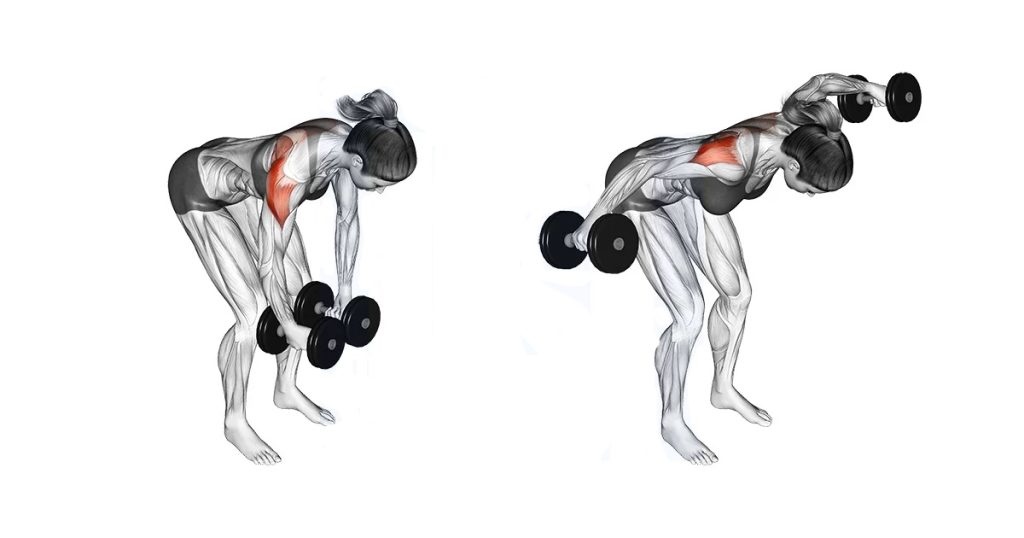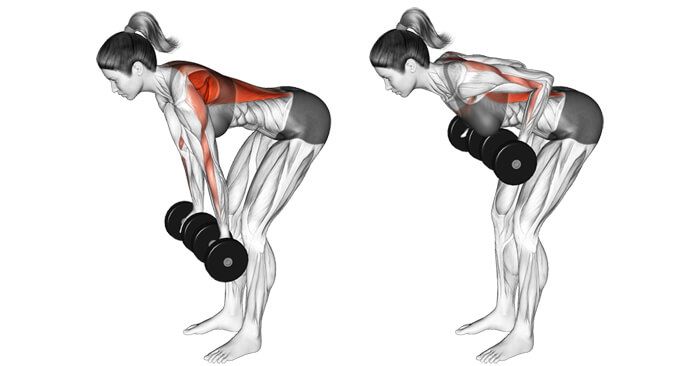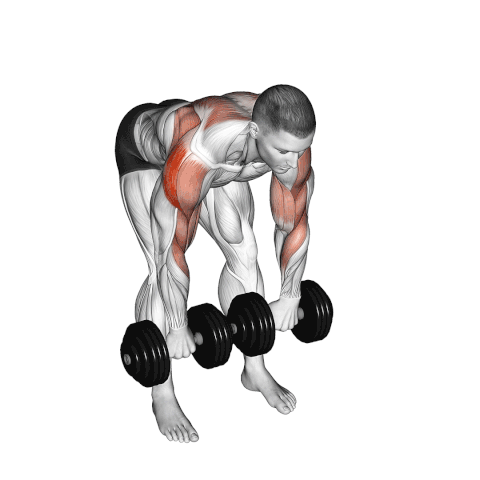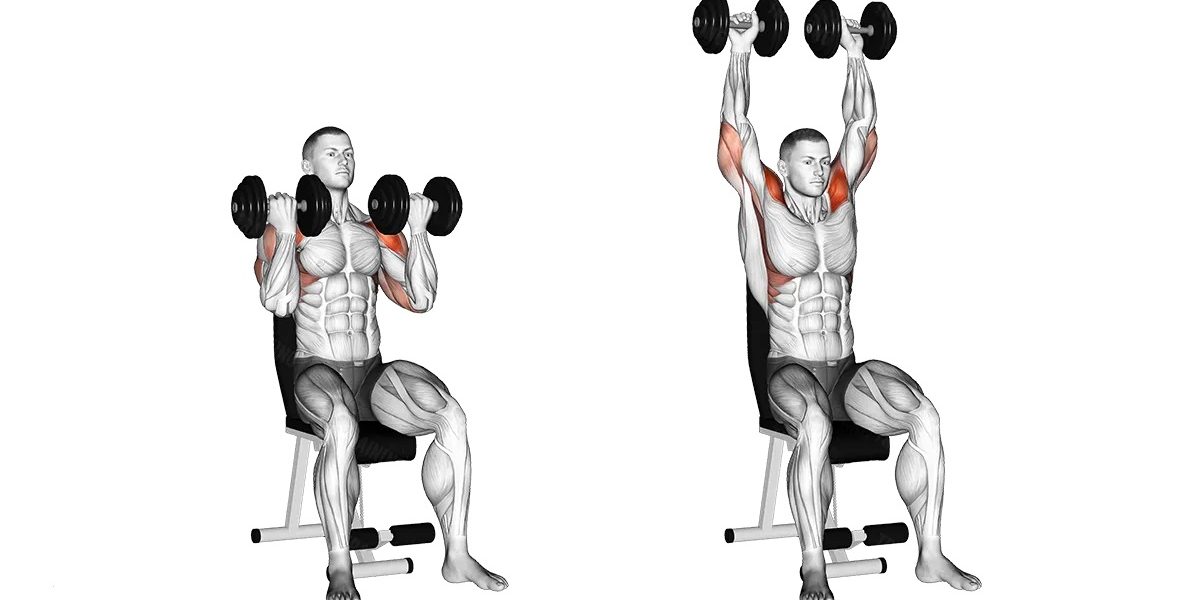Dumbbell rear delt exercises help fix your posture and make your shoulders look wider. Most people forget about the rear delts. That’s why their shoulders look flat from the side. Honestly, if you train only front and side delts, you’ll never get that 3D look. Rear delts are small, but they change everything. You don’t need machines or cables either. Just a pair of dumbbells and the right form. In this guide, I’ll show you the best dumbbell moves to grow your rear delts fast.
Why Dumbbell Rear Delt Exercises Matter
Dumbbell rear delt exercises are key if you want stronger, healthier shoulders. Here’s why they matter.
🔷 Improve your posture
Rear delts pull your shoulders back. If you sit a lot or tend to hunch forward, training them helps straighten you up.
🔷 Create balance
Most people train chest and front delts way more. Rear delts balance out your upper body and stop you from looking lopsided.
🔷 Build that 3D shoulder look
Side and front delts make your shoulders wide. But rear delts? They give you that full, round shape from every angle.
🔷 Protect your shoulders
Weak rear delts can cause joint issues. Strengthening them keeps your shoulders stable and pain-free.
Best Dumbbell Rear Delt Exercises You Should Try
Dumbbell rear delt exercises don’t need to be fancy. These simple moves hit hard if you do them right.
Rear Delt Fly

Targets the rear delts directly.
Feels like a classic for a reason. Keep your arms slightly bent and move slow. No swinging.
How to do it:
- Stand with feet shoulder-width apart, slight bend in knees
- Hinge at your hips and let dumbbells hang down
- Raise both arms out to the sides until they’re in line with your shoulders
- Lower slowly and repeat
Dumbbell Rear Delt Row

Combines rowing and rear delt activation.
Hits differently than normal rows—more squeeze, less trap.
How to do it:
- Bend over with dumbbells in hand, back flat
- Keep elbows flared out to the sides
- Pull the weights toward your upper ribs
- Pause and squeeze your rear delts, then lower slowly
Incline Bench Rear Delt Raise

Takes pressure off your lower back.
Lying on the bench helps you focus only on your shoulders.
How to do it:
- Set a bench at a low incline and lie face down with dumbbells in hand
- Let your arms hang straight down
- Raise them out to the sides, elbows slightly bent
- Lower slowly, don’t rush
Single-Arm Prone Rear Delt Raise

Perfect for fixing imbalances and improving mind-muscle connection.
One arm at a time means total focus—no cheating.
How to do it:
- Lie face down on a flat bench with a dumbbell in one hand
- Let that arm hang straight down from the bench
- Raise the dumbbell out and slightly back, elbow soft
- Pause and squeeze your rear delt, then lower with control
- Switch sides after each set
Dumbbell Face Pull (Bent Over)

Simulates the cable version, but with dumbbells.
Not easy—but if you keep your elbows high, it hits perfectly.
How to do it:
- Bend at the hips like a bent-over row
- Hold dumbbells in front of you, palms facing in
- Pull the weights toward your face, elbows flaring out
- Squeeze your rear delts, then lower back to start
Common Mistakes When Training Rear Delts
Dumbbell rear delt exercises can feel totally useless if you’re making these mistakes. Here’s what to watch out for—and how to fix them:
| Mistake | How to Avoid |
|---|---|
| Using too much weight | Drop the weight and focus on strict, controlled reps |
| Swinging the dumbbells | Slow down the tempo and keep your body still |
| Shrugging your shoulders | Keep your shoulders down and relax your traps |
| Moving too fast | Add a slight pause at the top to build control |
| Not feeling the rear delts working | Use a mirror, try one arm at a time, and go lighter |
Dumbbell rear delt exercises are simple. But only if you do them right. Don’t just go through the motion. Slow it down. Focus on the muscle. Honestly, rear delts change everything. They make your shoulders pop, fix your posture, and keep you injury-free. Add a few of these moves to your routine—you’ll feel the difference fast.

I’m Riley Williams, an editor for Leadman Fitness where we engineer bespoke strength equipment tailored to unique training goals. My expertise lies in home gym solutions, mobility tools, and injury-prevention gear, shaped by 8 years as a strength coach and rehab specialist. I know how subtle design flaws—a knurling pattern that blisters hands or a bolt that loosens mid-session—can derail progress.
I bridge the gap between our production team and everyday athletes: surveying garage gym owners, analyzing wear patterns on returned gear, and pressure-testing prototypes with physical therapists. My content cuts through marketing hype, focusing on practical fixes—whether you’re retrofitting a basement gym or sourcing commercial equipment that survives 24/7 use. If it’s in our catalog, I’ve stress-tested it myself.
